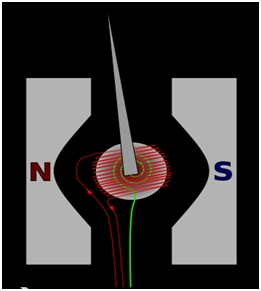Home › Electrical Engineering Forum › General Discussion › How to use a voltmeter?
- This topic has 0 replies, 1 voice, and was last updated 9 years, 10 months ago by
admin.
-
AuthorPosts
-
2015/04/30 at 9:14 am #11253
admin
KeymasterDo you want to know the use of a voltmeter? Then you should read this article by Nasir who wrote a new part of his tutorial series on instruments used in electrical engineering to measure.
If you want to send an article, send us a mail and we’ll publish it on the blog!
Introduction
So as promised, here we are with another very interesting and informative, yet simple and easy tutorial for you on measuring devices for electrical engineers.
If you are an electrical engineer, or even the least bit interested in such electrical stuff, I am pretty sure all of you would be familiar with this measuring device known as voltmeter, and how to use it.
It is one of the most famous, or you could say extensively used measuring devices used now a days, along with ammeter. But most people do not know about the internal construction and working principle, so here I am going to throw light on it.What is a voltmeter?
A voltmeter is a device that is used to measure electric potential or voltage. As we have already studied about the ammeter in our very first tutorial, so it is really straightforward and easy to understand the working of voltmeter.
Actually nothing new, because a voltmeter is just an extension of ammeter and works on the same principle of D’Arsonval galvanometer.
Working Principle of Voltmeters
Voltmeter works on the principle of Ohm’s law, which states that the voltage across a resistance is directly proportional to the current passing through it. In order to implement it in real time, we form the construction of a galvanometer, such that a coil is suspended in a magnetic field.
We know that the current passing through the circuit also passes through the coil and the needle that is attached to the coil which deflects on the reading scale moves, and the movement of the needle is directly proportional to the current passing through it.
This construction is shown in the figure below:
In orders to convert this ammeter into a galvanometer, we attach a large resistance in series with the coil of the galvanometer. This resistor acts to minimize the coil interference with the circuit.
Since according to ohms law the voltage is directly proportional to the resistance, so the voltage consumed by the galvanometer is minimized and a very accurate voltage drop across the circuit is measured.
Accuracy of Voltmeters
As far as the accuracy of voltmeters is concerned, digital voltmeters are more accurate than analogue voltmeters. Analogue voltmeters display the results in the form of a needle deflected on the screen, the deflection of which is proportional to the voltage measure.
Their accuracy is a few percent whereas the accuracy of digital voltmeters who use an analogue to digital converter to display results numerically are highly accurate.
Applications of voltmeters
Voltmeters are one of the most widely used measuring devices especially in circuitry and hardware where very precise measurement is required.
- They measure the voltage to ensure safety of the circuit and the components used.
- They are used in circuit debugging to certify that the optimal value of the required voltage is present and is available to each component.
- They are used with cathode ray tubes to ensure best and accurate results.
- They are used in laboratories for experimenting and testing purposes as well.
This was all about our today’s tutorial. Another interesting tutorial will be available soon so stay tuned and keep visiting to get updated.
Was it helpful and beneficial in upgrading your knowledge?
Nasir
-
AuthorPosts
- You must be logged in to reply to this topic.


